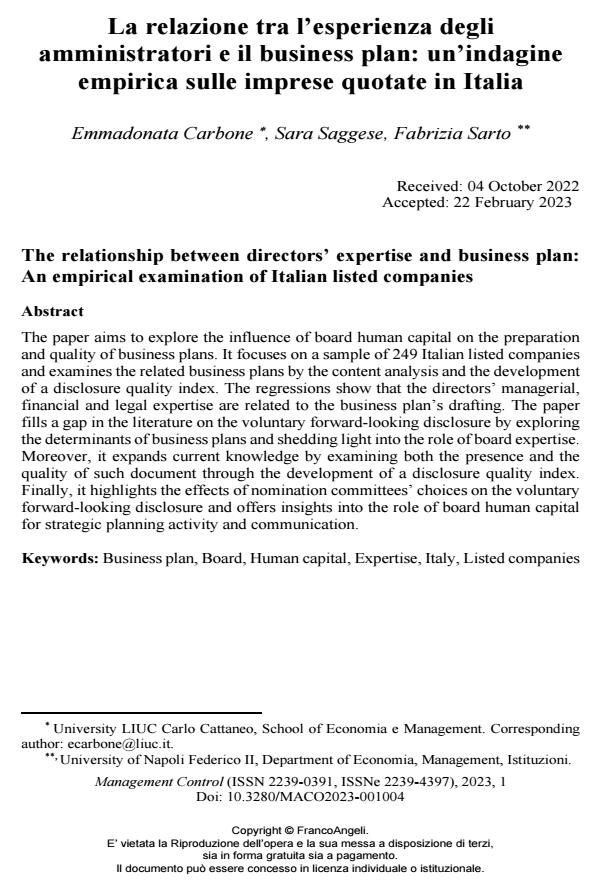The relationship between directors’ expertise and business plan: An empirical examination of Italian listed companies
Journal title MANAGEMENT CONTROL
Author/s Emmadonata Carbone, Sara Saggese, Fabrizia Sarto
Publishing Year 2023 Issue 2023/1
Language Italian Pages 26 P. 69-94 File size 319 KB
DOI 10.3280/MACO2023-001004
DOI is like a bar code for intellectual property: to have more infomation
click here
Below, you can see the article first page
If you want to buy this article in PDF format, you can do it, following the instructions to buy download credits

FrancoAngeli is member of Publishers International Linking Association, Inc (PILA), a not-for-profit association which run the CrossRef service enabling links to and from online scholarly content.
The paper aims to explore the influence of board human capital on the preparation and quality of business plans. It focuses on a sample of 249 Italian listed companies and examines the related business plans by the content analysis and the development of a disclosure quality index. The regressions show that the directors’ managerial, financial and legal expertise are related to the business plan’s drafting. The paper fills a gap in the literature on the voluntary forward-looking disclosure by exploring the determinants of business plans and shedding light into the role of board expertise. Moreover, it expands current knowledge by examining both the presence and the quality of such document through the development of a disclosure quality index. Finally, it highlights the effects of nomination committees’ choices on the voluntary forward-looking disclosure and offers insights into the role of board human capital for strategic planning activity and communication.
Keywords: Business plan, Board, Human capital, Expertise, Italy, Listed companies
- Developing a Conceptual Framework for Business Plan Drafting: Insights from Practitioners Paolo Roffia, in Administrative Sciences /2025 pp.113
DOI: 10.3390/admsci15030113
Emmadonata Carbone, Sara Saggese, Fabrizia Sarto, La relazione tra l’esperienza degli amministratori e il business plan: un’indagine empirica sulle imprese quotate in Italia in "MANAGEMENT CONTROL" 1/2023, pp 69-94, DOI: 10.3280/MACO2023-001004